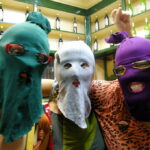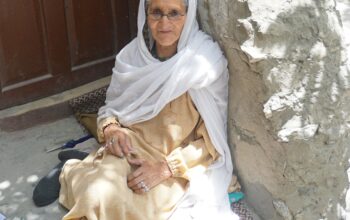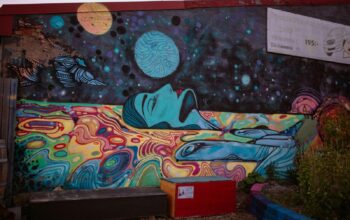What for some appears to be the ultimate dream-come-true wonderland might for others be the worst nightmare. Christiania, a community in Copenhagen, most certainly is one of the places on which opinions differ.
Christiania lies in the heart of Copenhagen – only about 35 kilometers from Malmö University – and used to be a military site. In the 1970s, the area started to be used by a social fringe group and slowly turned into what it is today: an alternative society or so-called “Freetown”. The community is based on anarchism and commits to self-governance; in practice, that means that housing is publicly owned and financed through crowdfunding. The property on which all of Christiania is built is owned by a non-profit organization that is financially supported by people all over Denmark. Because of this, the area is not affected by the speculations of the real estate market and does not partake in the ups and downs of the market economy. The living situation of Christiania’s inhabitants is therefore much more secure in regards to reliable and affordable rent prices.
Even though the property is shared and owned by a non-profit organization, residents are allowed to make any changes they want. They are not only encouraged to develop their own living space but also to partake in upholding the community: In several workgroups – like infrastructure child-care, press office, and economy – the population of Christiana can contribute to current projects and help in advancing the overall project.
Moreover, the Freetown has its own institutions and mechanisms for road works, garbage collection, and providing care-taking for young children. Nevertheless, the inhabitants of Christiania still are a part of Copenhagen’s society as large parts of the community work in Denmark’s capital, go to schools there and use infrastructure that Christiania doesn’t provide – like hospitals. Many of the people who don’t work in Copenhagen work independently in the arts sector.
But the wonderland that Christiania portrays for some people is being more and more disturbed by police raids. A part of its self-governing structure is that Christiania has a liberal attitude towards soft drugs. Despite this fact, the Freetown was left in peace for a long time. This has changed during the past few years and there are rising tensions between the inhabitants and the police.
Apart from this recent development that makes Christiania appear less like an attractive place to live in, another question that remains is how much Christiania is scalable and if it can be a model for other communities. On the one hand, it seems like self-governance is a form of community that is supported by many young people as it gives them the freedom to participate in their community and customize their own space. Besides, the fact that Christiania’s renting prices are independent of the fluctuations of the market prevents gentrification and makes housing affordable – even in Copenhagen.
On the other hand, critics of the project make the point that it might not be economically sustainable for cities to have communities like Christiania.
If you want to dive deeper into the topic and listen to inhabitants of Christiania addressing those issues, ckeck out this YoutTube video.
By Runa Ziegler
Photo credits:
(CC BY 2.0) taken by brooke | Scott Raymond | Flickr
(CC BY-NC-ND 2.0) Christiania, Copenhagen | One of the many creative spaces wi… | Flickr
(CC BY-NC 2.0) Christiania | Christiania, Copenhague, Dinamarca. Más inform… | Flickr








